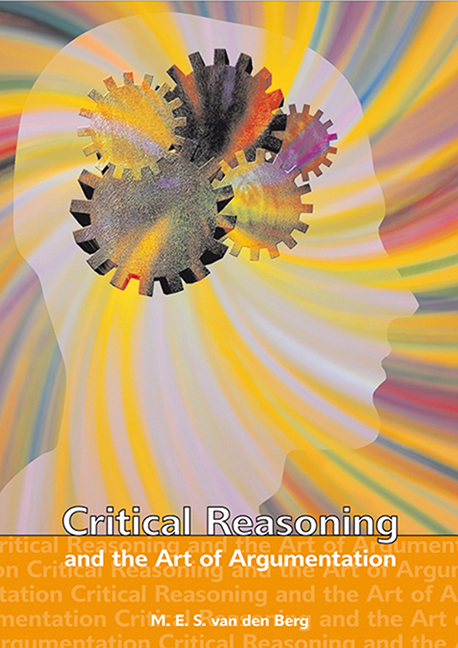Book contents
- Frontmatter
- Contents
- Preface
- CHAPTER 1 What is critical reasoning?
- CHAPTER 2 Obstacles to clear thinking: Preconceived ideas and fallacies
- CHAPTER 3 Working with arguments
- CHAPTER 4 How to analyse arguments
- CHAPTER 5 Definitions, counterexamples and counterarguments
- CHAPTER 6 Evaluating arguments
- CHAPTER 7 Applying your knowledge and skills to the evaluation of arguments
- CHAPTER 8 Constructing arguments and writing argumentative essays
- References
- Glossary
- Index
CHAPTER 4 - How to analyse arguments
Published online by Cambridge University Press: 20 February 2020
- Frontmatter
- Contents
- Preface
- CHAPTER 1 What is critical reasoning?
- CHAPTER 2 Obstacles to clear thinking: Preconceived ideas and fallacies
- CHAPTER 3 Working with arguments
- CHAPTER 4 How to analyse arguments
- CHAPTER 5 Definitions, counterexamples and counterarguments
- CHAPTER 6 Evaluating arguments
- CHAPTER 7 Applying your knowledge and skills to the evaluation of arguments
- CHAPTER 8 Constructing arguments and writing argumentative essays
- References
- Glossary
- Index
Summary
If you think that your belief is based upon reason, you will support it by argument, rather than by persecution, and will abandon it if the argument goes against you.
Bertrand RussellAs critical thinkers, we should know how to analyse arguments clearly. This is because a complete analysis of an argument helps us to arrive at a better understanding of the meaning of the argument. The word ‘analyse’ means to dissect, or to lay bare. When we analyse an argument we want to lay bare the components of the argument. Differently put, we want to reveal the argument's structure. In order to do this, we should know how to identify premises and conclusions in arguments. This is often made easier by underlining the signal words in an argument. Signal words in an argument indicate which statements are premises and which statements are conclusions. In the first section of this chapter, I will explain the role of conclusion and premise indicators in arguments.
Identifying premises and conclusions
Arguers often supply signal words in their arguments that help us to identify their premises and conclusions. In the following example the person advancing the argument provides clues that help us to identify the conclusion of the argument:
If private enterprise does better than the South African government at running businesses, then it will do better at running railway services. Private enterprise does better at running businesses. We can conclude that private enterprise will do better at running railway services.
In the example above the arguer tells us which statement is the conclusion of the argument: he or she uses the phrase ‘we can conclude that’. Such phrases or expressions serve as clues to identify the conclusion of an argument and we call them conclusion indicators.
The following words and phrases usually signal conclusions:
Let us look at another example where the person offering an argument gives clues that identify the premises of the argument:
Since smoking can harm those around us, we can conclude that there should be tight restrictions on the production of cigarettes. This is because, if smoking is harmful to those around us, then cigarette companies are manufacturing harmful substances; and if cigarette companies are manufacturing harmful substances, there should be tight restrictions on the production of cigarettes.
- Type
- Chapter
- Information
- Critical Reasoning and the Art of Argumentation , pp. 49 - 71Publisher: University of South AfricaPrint publication year: 2010



